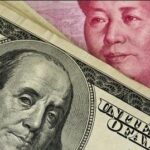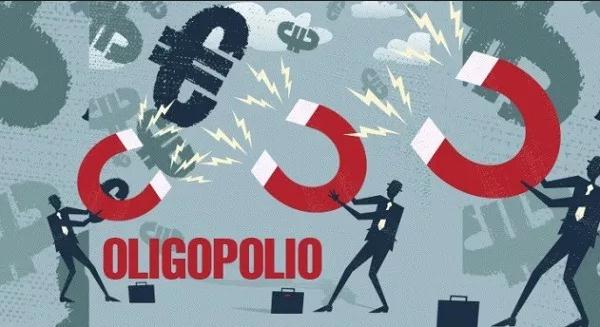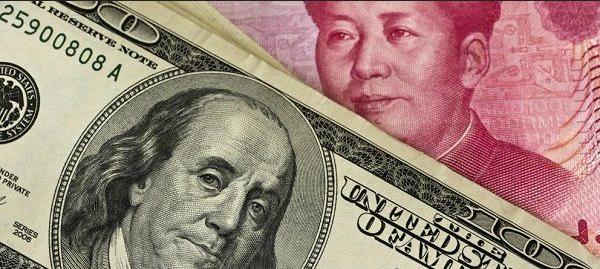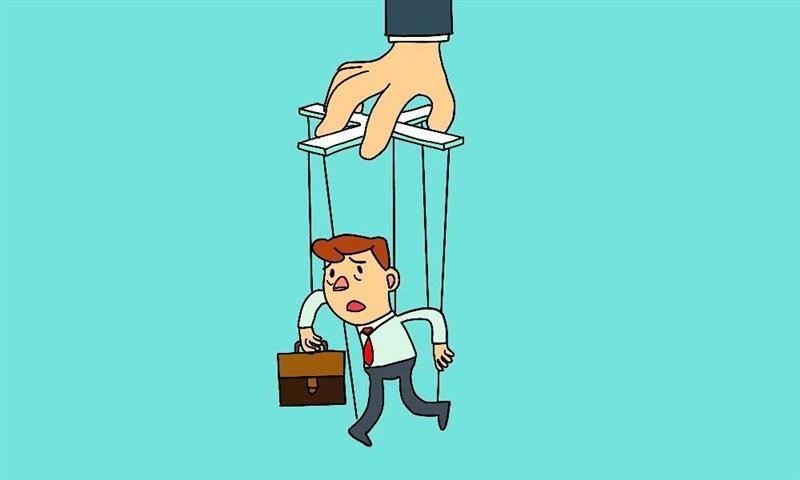Large technology companies are in the eyes of regulators for their anti-competitive practices and what generate inefficiency in the markets. Many today wonder if AliExpress and Amazon constitute a global oligopoly, the same would be true for companies like Apple and Samsung.
However, I believe that in this scenario we have much less known players with perverse incentives that are affecting the global economy and its growth.
Etymology of the word Oligopoly
The word Oligopoly is derived from two Greek words: “Oligi” meaning “few” and “Polein” meaning “sell”. An oligopoly market situation is also called “competition among the few.”
In this article, we will look at the definition of oligopoly and some important characteristics of this market structure.
Concept of Oligopoly
The key question: What is an oligopoly? It is a small group of companies, more than two, that control a market and establish mechanisms such as controls on production, price fixing and political lobbying to maximize their investments.
In this sense, an oligopoly is a set of companies or organizations that join forces, explicitly or tacitly, to seek abnormal profits in a market or industry of which only they have control.
Characteristics of oligopolies
Profit maximization conditions
An oligopoly maximizes profits.
Possibility to set price
Oligopolies are price determiners rather than price takers. That is, they can determine what they want to charge the public for their products.
Input and output
The barriers to entry are high. The most important barriers are government licenses, economies of scale, patents, access to expensive and complex technology, and strategic actions by established companies designed to discourage or destroy nascent companies.
Additional sources of barriers to entry often result from government regulation that favors existing companies, making it difficult for new companies to enter the market. Oligopolies restrict access to key information and inputs so that more competitors reach the market.
Number of companies
There are “Few” or a “handful” of sellers. There are so few companies that the actions of a single company can influence the actions of the other companies.
Long term benefits
Oligopolies can retain abnormal profits in the long run. High barriers to entry prevent secondary companies from entering the market to capture excess profits.
Product differentiation
The product can be homogeneous (steel) or differentiated (automobiles). If a group of companies set their minds to it, they can constitute an oligopoly over any good or service.
perfect knowledge
Assumptions about perfect knowledge vary, but knowledge of various economic factors can generally be described as selective.
Oligopolies have perfect knowledge of their own cost and demand functions, but their interfirm information may be incomplete.
Buyers have only imperfect knowledge regarding price, cost and quality of the product.
interdependence
The distinguishing characteristic of an oligopoly is interdependence.
Oligopolies are usually made up of a few large companies.
Each company is so large that its actions affect market conditions. Therefore, competing companies will be aware of a company’s market actions and respond appropriately.
This means that when contemplating a market action, a company must take into account the possible reactions of all competing companies and their countermoves.
It is much like a game of chess, in which a player must anticipate a complete sequence of moves and countermoves to determine how to achieve his goals; This is known as game theory.
For example, an oligopoly considering a price cut may want to estimate the probability that competing firms will also lower their prices and possibly trigger a ruinous price war.
Or if the company is considering a price increase, it may want to know if other companies will also increase prices or keep existing prices constant.
This anticipation leads to price rigidity, as companies will only be willing to adjust their prices and production quantity in accordance with a “price leader” in the market.
This high degree of interdependence and the need to be aware of what other companies are doing or could do contrasts with the lack of interdependence in other market structures.
In a perfectly competitive (PC) market there is zero interdependence because no firm is large enough to affect the market price.
All companies in a PC market are price takers (they obey the prices set by the market), since the current market selling price can be followed in a predictable manner to maximize short-term profits.
In a monopoly, there are no competitors to worry about.
In a monopolistically competitive market, each firm’s effects on market conditions are so insignificant that competitors safely ignore them.
Competition without price
Oligopolies tend to compete on terms other than price. Loyalty schemes, advertising and product differentiation are examples of non-price competition.
Conditions for the formation of oligopolies
Among the multiple characteristics that we find in society that can favor the existence of oligopolies is the absence of appropriate political regulations, the high concentration of wealth in the hands of a small number of entrepreneurs and/or service providers in society.
Current scenario
The International Monetary Fund has issued a report detailing how oligopolies are negatively affecting the economy of our time.
In the chapter “The rise of corporate market power and its macroeconomic effects ” of the Global Economic Review, the IMF wants to try to answer the question of whether the increase in market power in certain companies is a factor behind the slowdown of the growth and inequality we experience today.
This report from the World Economic Forum points out that the market power of companies has grown moderately within advanced economies, where companies’ prices over their marginal costs rose by 8% during the period 2000-2015.
The IMF studied one million large companies in 27 countries and found that two-thirds are in advanced economies and one-third are in developing economies.
The IMF analyzes the market power of these companies and studies the macroeconomic implications of this growing power.
Within the companies studied, they are the technology companies that grow the most in market power. These invest in patents and software, and are the best performers in terms of profits.
The companies that have grown the most in their market power are those that have innovative capacity, and at the same time have the possibility of gaining market shares due to their wide profit margin.
Consequences in the macroeconomy
The market power of these companies extended to a small number of companies can be disastrous for the economy as a whole due to their practices to sustain their power and preventing other companies from entering the competition.
The above results in high costs of the products and services that these companies offer to the general population, generating high inflation as a consequence.
At the same time, since there are few companies that participate in a market, the employment and quality of the same that they offer to workers decreases, driving salaries down and decreasing the quality of life of employees.
With few competing firms able to set prices or raise barriers for other firms to compete, innovation is discouraged in sectors where oligopolies exist, which in turn results in a loss of efficiency in the economy.
Oligopolies in countries with competition laws
Oligopolies become “mature” when they realize that they can maximize their profits through joint profit maximization.
As a result of operating in countries with imposed competition laws, oligopolists will operate under tacit collusion, which is collusion through the understanding that if all competitors in the market increase their prices, collectively all competitors can achieve close economic profits. to monopolist , with no evidence of non-compliance with government market regulations.
Therefore, the twisted demand curve for a joint profit-maximizing oligopoly industry can model the pricing decision behaviors of oligopolists other than that of the price leader (the price leader is the firm that all the other firms follow in terms of pricing decisions).
This is because if a company unilaterally raises the prices of its good/service, and other competitors do not follow, the company that increased its price will lose a significant market when facing the elastic upper segment of the demand curve.
As joint profit maximization achieves greater economic profits for all firms, there is an incentive for an individual firm to “cheat” by expanding production to gain greater market share and profits.
In oligopoly deception of one firm to others within the oligopoly system, the incumbent firm that discovers this collusive violation and the other firms in the market will retaliate by matching or lowering prices below the original drop.
Therefore, the market share that the company that lowered the price gained will have that gain minimized or eliminated. That is why in the kinked demand curve model, the lower segment of the demand curve is inelastic.
As a result of the above, price rigidity prevails in such markets.
What can be done against oligopolies
Governments can establish rules against price fixing by companies that constitute a cartel or oligopoly.
They can also break the power of oligopolies by offering favorable conditions on taxes and regulations for new companies.
In the same way, they can also encourage competition by creating public companies that compete in key sectors where oligopolies have power such as banking, education, services and communications.
Current examples of oligopoly
One of the best-known international oligopolies is the OPEC Cartel (Organization of Petroleum Exporting Countries) which seeks to set market prices by limiting its production and thus obtain greater profits.
Other examples:
In the American media we have an oligopoly made up of six large groups: Walt Disney (DIS), Time Warner (TWX), CBS Corporation (CBS), Viacom (VIAB), NBC Universal, and News Corporation (NWSA).
In Software firms we have two very clear examples of oligopolies, in the mobile sector there are Android and iOS, and in computer software we have Apple and Microsoft.
In the American automobile sector we have three large companies with high market power: Ford (F), GMC, and Chrysler.
In communications we have the American operating firms Verizon (VZ), Sprint (S), AT&T (T), and T-Mobile (TMUS). These dominate the market and have a great advantage over small operators.
For the music and entertainment sector we have the following companies as examples: Universal Music Group, Sony, BMG, Warner and EMI Group.
Examples of oligopoly in Latin America
In Latin America, competitiveness is also slowed down by the existence of oligopolies. In Colombia we have as an example the Aval Group in the financial sector and the existence of only other commercial banks that set very similar management fees on their cards and high interest rates on their loans.
Cartel of corrupt companies in Brazil
In Brazil, with the rise of the oil and construction sector during the governments of Lula Da Silva and Dilma Rousseff, the existence of a cartel that imposed its conditions and prices on government companies such as Petrobras and the government itself in its infrastructure projects was evident . .
This cartel was investigated in the famous Lava Jato Operation.
The story of this cartel is told in the television series El Mecanismo.
The Oligopoly was made up of 13 contracting companies, including Odebretch.











